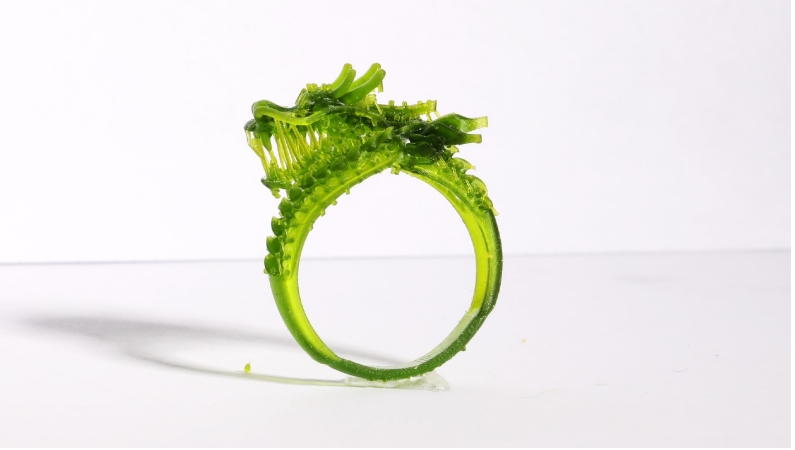The Role of 3D Printing in Silver Jewelry Manufacturing
Abstract
The jewelry industry has undergone significant transformations due to advancements in technology, particularly with the introduction of 3D printing (additive manufacturing). This innovative method has revolutionized traditional jewelry-making processes, offering greater design flexibility, reduced production time, and cost efficiency. In silver jewelry manufacturing, 3D printing plays a crucial role in prototyping, customization, and mass production. This paper explores the impact of 3D printing on silver jewelry fabrication, discussing its benefits, challenges, and future prospects.
1. Introduction
Silver jewelry has been a staple in fashion and luxury for centuries, valued for its affordability, durability, and aesthetic appeal. Traditional silver jewelry manufacturing involves labor-intensive techniques such as hand carving, casting, and metal stamping. However, the rise of 3D printing technology has introduced a more efficient and precise approach to jewelry production.
3D printing allows jewelers to create intricate designs that were previously impossible or too costly to produce manually. By using Computer-Aided Design (CAD) software, designers can develop highly detailed models that are then printed in wax, resin, or even directly in metal. This technology has particularly benefited silver jewelry manufacturing due to silver’s versatility and popularity in both high-end and affordable markets.
This paper examines:
- The evolution of 3D printing in jewelry making
- Key 3D printing technologies used in silver jewelry production
- Advantages over traditional methods
- Challenges and limitations
- Future trends in 3D-printed silver jewelry
2. Evolution of 3D Printing in Jewelry Manufacturing
2.1 Early Adoption in the Jewelry Industry
3D printing was initially adopted in the 1980s for rapid prototyping in industrial applications. By the early 2000s, jewelry designers began experimenting with stereolithography (SLA) and wax-based 3D printing to create molds for lost-wax casting.
2.2 Shift to Direct Metal Printing
With advancements in Direct Metal Laser Sintering (DMLS) and Binder Jetting, jewelers can now print silver jewelry directly, bypassing traditional casting methods. This has significantly reduced production time and material waste.
3. Key 3D Printing Technologies in Silver Jewelry Production
3.1 Wax-Based 3D Printing (Indirect Method)
- Process: A wax model is printed and used to create a mold for casting.
- Advantages: High precision, smooth surface finish, cost-effective for intricate designs.
- Applications: Custom rings, pendants, and filigree work.
3.2 Stereolithography (SLA) and Digital Light Processing (DLP)
- Process: Uses UV-cured resin to build detailed models.
- Advantages: Excellent for fine details, ideal for prototypes.
- Applications: High-end designer jewelry with complex geometries.
3.3 Direct Metal Laser Sintering (DMLS) and Selective Laser Melting (SLM)
- Process: Laser fuses silver powder layer by layer.
- Advantages: No need for casting, strong and durable final product.
- Applications: High-precision silver jewelry with minimal post-processing.
3.4 Binder Jetting
- Process: Binds metal powder with a liquid binder, then sintered.
- Advantages: Faster production, lower cost for mass manufacturing.
- Applications: Affordable silver jewelry collections.
4. Advantages of 3D Printing in Silver Jewelry Manufacturing
4.1 Design Freedom and Complexity
- Allows for intricate patterns, lattice structures, and organic shapes that are difficult to achieve manually.
- Enables customization (personalized engravings, bespoke designs).
4.2 Faster Prototyping and Production
- Reduces lead time from weeks to days.
- Enables on-demand manufacturing, reducing inventory costs.
4.3 Cost Efficiency
- Minimizes material waste compared to traditional carving and milling.
- Lowers labor costs by automating production.
4.4 Sustainability
- Less metal waste due to precise material usage.
- Supports recycled silver in powder form.
5. Challenges and Limitations
5.1 High Initial Investment
- Industrial 3D printers and metal sintering systems are expensive.
5.2 Post-Processing Requirements
- Printed silver jewelry often requires polishing, plating, and assembly.
5.3 Material Limitations
- Not all silver alloys are suitable for 3D printing.
5.4 Skill Gap
- Jewelers need CAD/CAM expertise to fully utilize 3D printing.
6. Future Trends in 3D-Printed Silver Jewelry
- Hybrid Manufacturing: Combining 3D printing with hand-finishing techniques.
- AI-Driven Design: Using machine learning to generate optimized jewelry models.
- Sustainable Practices: Increased use of recycled silver and eco-friendly printing methods.
7. Conclusion
3D printing has transformed silver jewelry manufacturing, enabling unprecedented design possibilities, efficiency, and customization. While challenges remain, ongoing advancements in materials, printing speed, and cost reduction will further solidify its role in the industry. As technology evolves, 3D-printed silver jewelry is set to become a dominant force in both luxury and mass-market segments.
